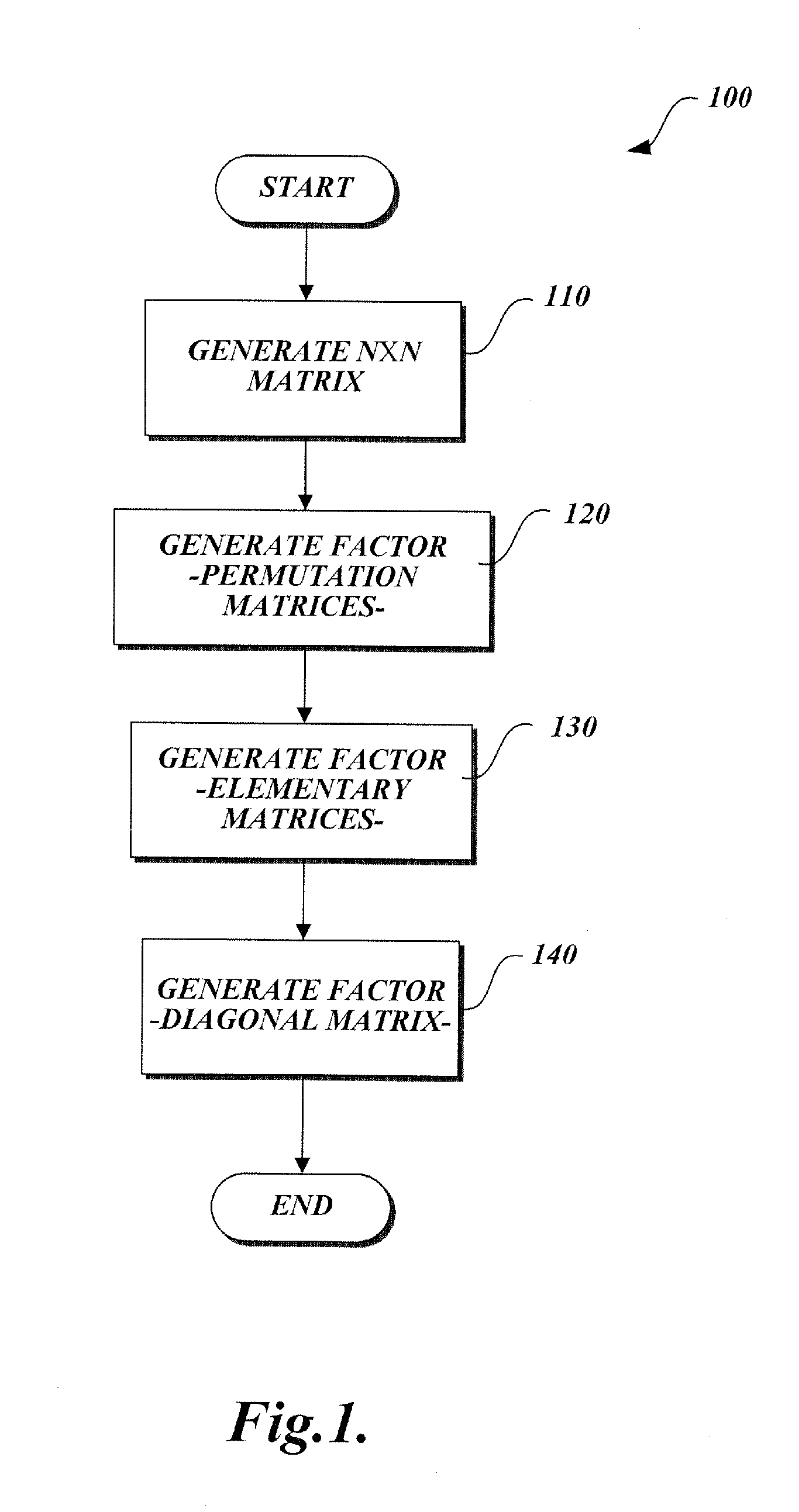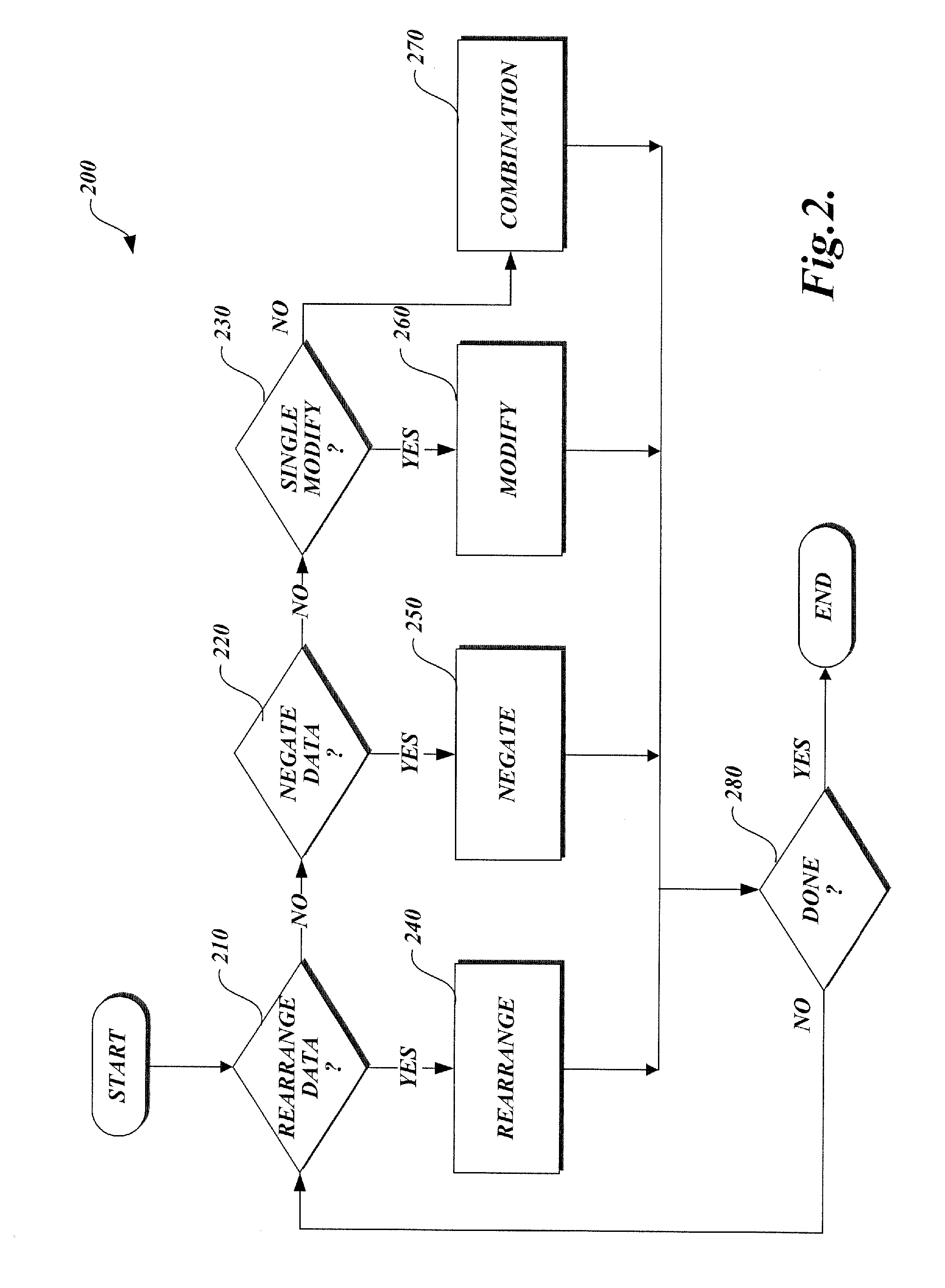Method of generating matrix factors for a finite-dimensional linear transform
a matrix factor and linear transform technology, applied in the field of image processing, can solve the problems of loss of data, high computational cost of lossless image transformation process, and complex image data compression and decompression circuitry
- Summary
- Abstract
- Description
- Claims
- Application Information
AI Technical Summary
Benefits of technology
Problems solved by technology
Method used
Image
Examples
example
The 9-7 Wavelet
[0329] As an example of the methods presented here, we consider a 9-7 wavelet which has been found to be well-suited for image compression and is in common use.
[0330] The exact formulas for the filter coefficients for this wavelet are given in the FBI fingerprint compression standard. The coefficients are expressed in terms of x1, where x1=(-1415+63108015)1 / 3+(-1415-63108015)1 / 3-16
[0331] is the real root of the equation
20x13+10x12+4x1+1=0
[0332] The referenced formulas also use a complex number x2, but they can be expressed in terms of x1 using the formulas
|x2|2=x12+x1 / 2+1 / 5 and
Rx2=−x1 / 2−1 / 4,
[0333] so x2 is not needed. The filter coefficients then become: h0(0)=-2x1(240 x12+160x1+83) / 32≈0.8526986790094034h0(±1)=-2x1(160 x12+90x1+37) / 32≈0.3774028556128538h0(±2)=-2x1(10x12-3) / 8≈-0.1106244044184234h0(±3)=52x1(2x1+1) / 32≈-0.023849650193800h0(±4)=-52x1 / 64≈0.0378284555069955h1(-1)=2(6x1-1) / (16x1)≈0.7884856164056644h1(-2)=...
PUM
 Login to View More
Login to View More Abstract
Description
Claims
Application Information
 Login to View More
Login to View More - R&D
- Intellectual Property
- Life Sciences
- Materials
- Tech Scout
- Unparalleled Data Quality
- Higher Quality Content
- 60% Fewer Hallucinations
Browse by: Latest US Patents, China's latest patents, Technical Efficacy Thesaurus, Application Domain, Technology Topic, Popular Technical Reports.
© 2025 PatSnap. All rights reserved.Legal|Privacy policy|Modern Slavery Act Transparency Statement|Sitemap|About US| Contact US: help@patsnap.com



